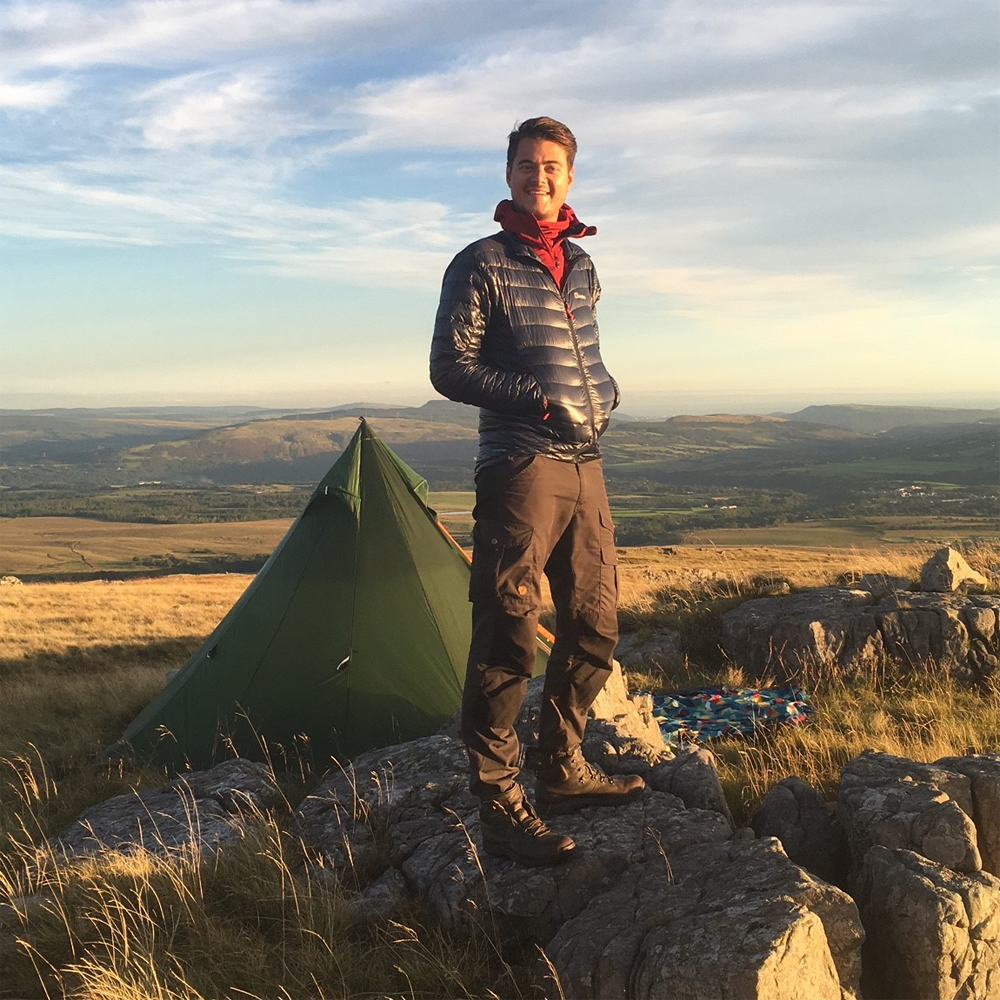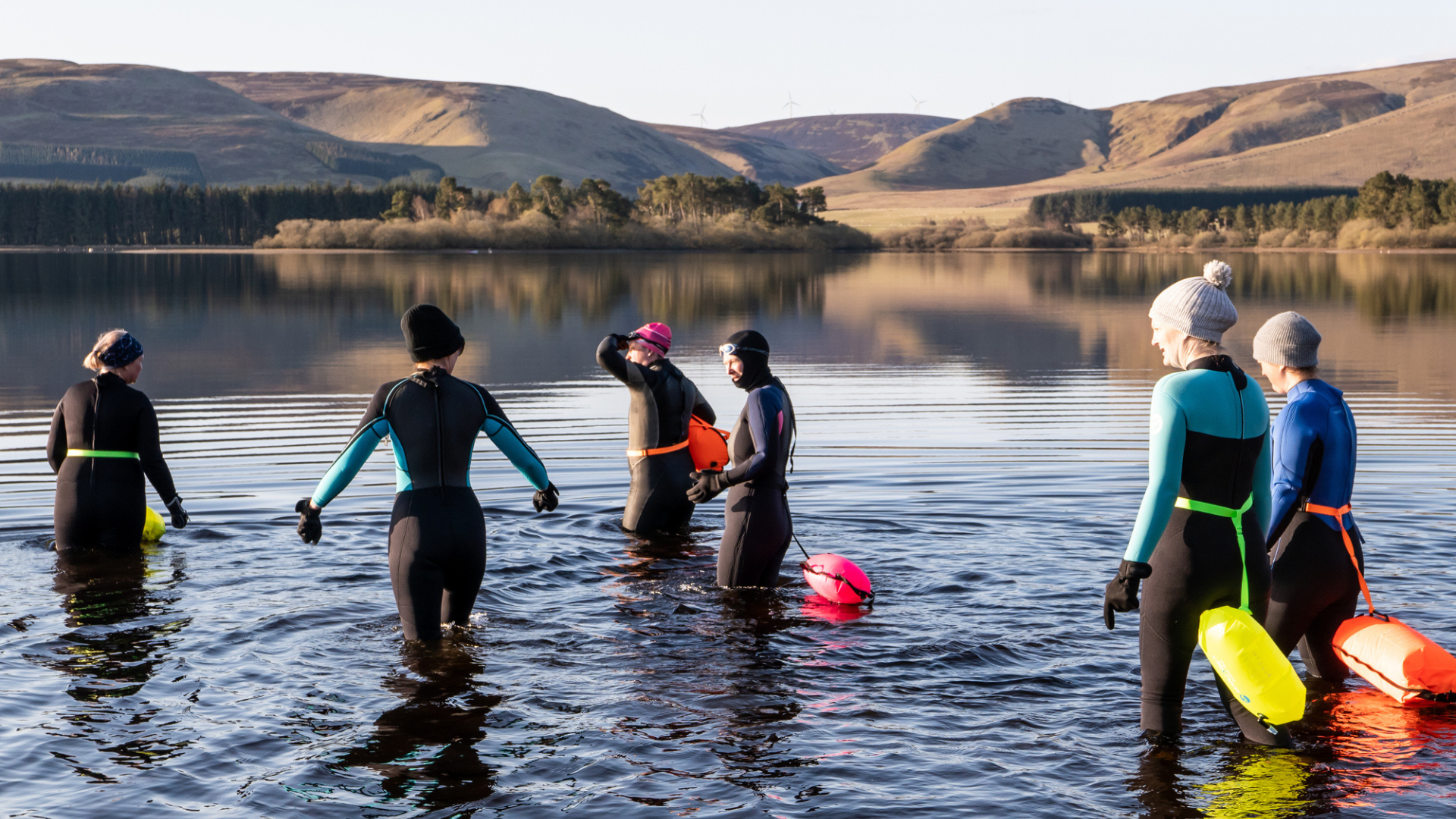The best one-person tents: solo shelters for backcountry epics
Our roundup of the best one-person tents details the finest options for lone wilderness adventures
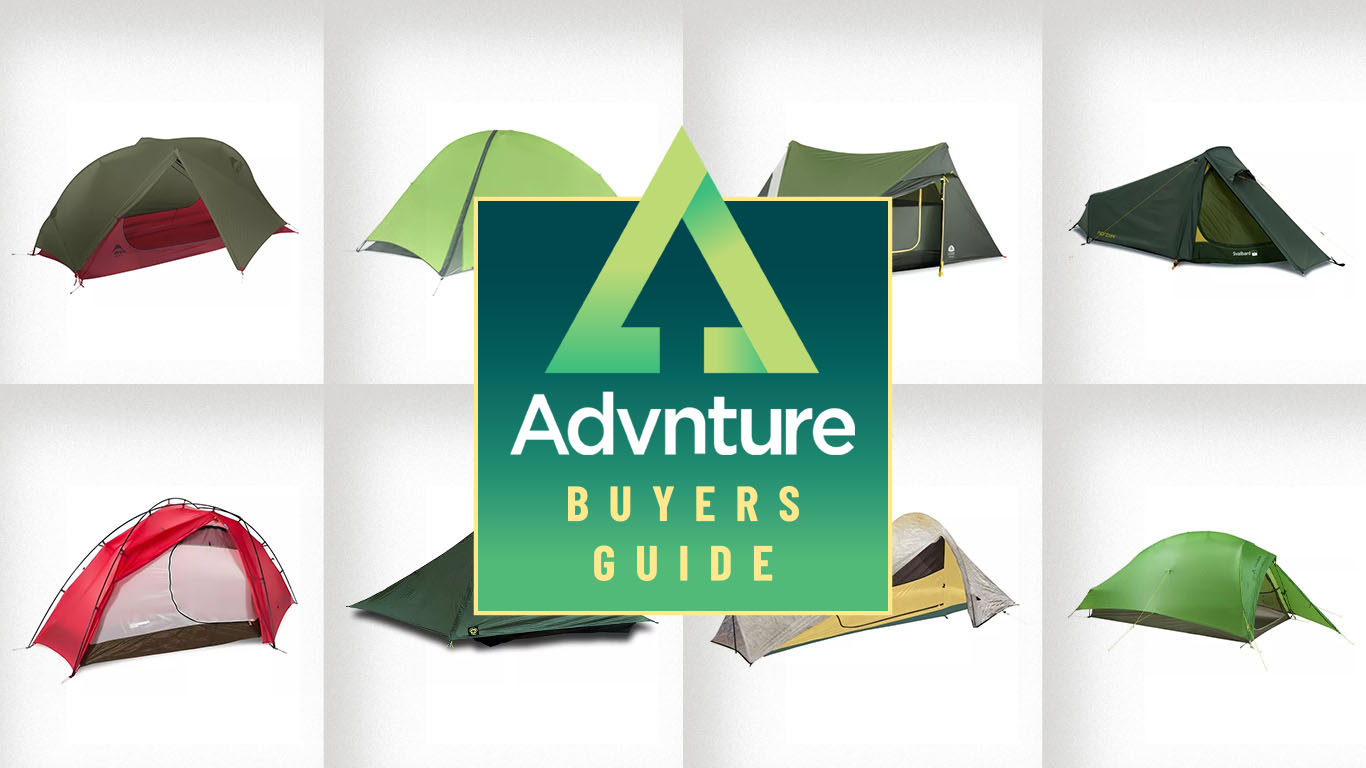
The best one-person tents are compact and lightweight, making them ideal for lone adventurers looking to go as light as possible but in more comfort offered by a bivy sack. Our experts have tested a wide range of solo shelters on backcountry camping missions in their intended habitat, the mountains, pitting them against the elements to see which ones thrive.
The result is a 12-strong selection of the very best tents for those seeking wilderness adventures. Despite offering greater creature comforts and weather protection than a bivy, the best one-person tents still represent a relatively minimal approach to wild camping. They're often without the space, both internal and in terms of vestibules, than that offered by the best 2-person tents, many of which are also light enough to be suited to backpacking expeditions. So, before buying, consider exactly what it is that you value in a shelter to get the right balance between cost, space and weight for your adventures.
We reckon that the multi award-winning Big Agnes Fly Creek HV UL2 is the best one-person tent for general wild camping. However, all the tents in our selection have been chosen on merit, with some more suited to harsher, wintry conditions. Read on to find out more.
The quick list
Here's our Quick List, starting with our top performer overall, followed by the rest of our roundup of the best one-person tents. For a more detailed look at these excellent shelters, navigate further down the guide.
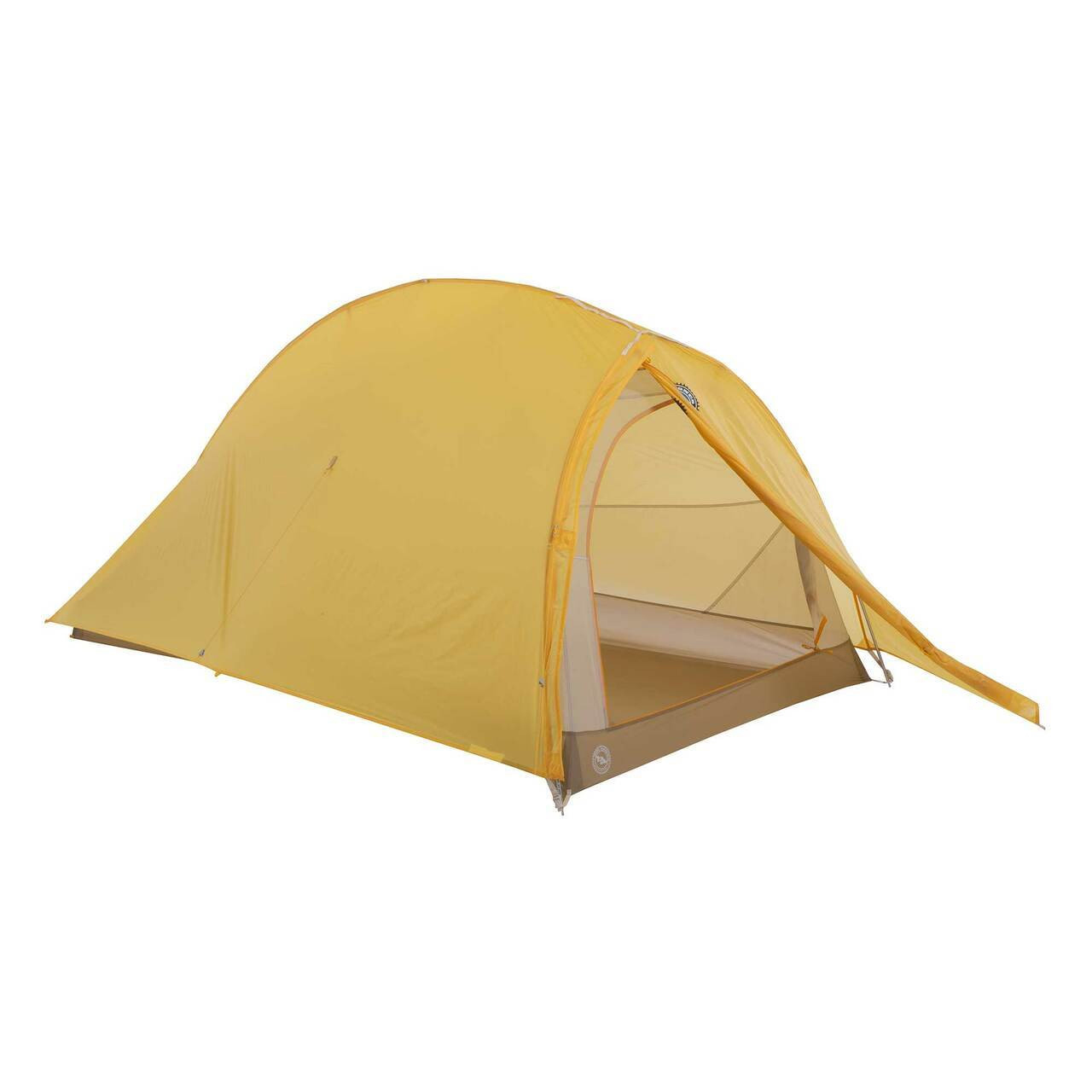
We love this multi-award-winning shelter that’s popular for a host of reasons, not least because of its tiny pack size, ultralight qualities and freestanding design
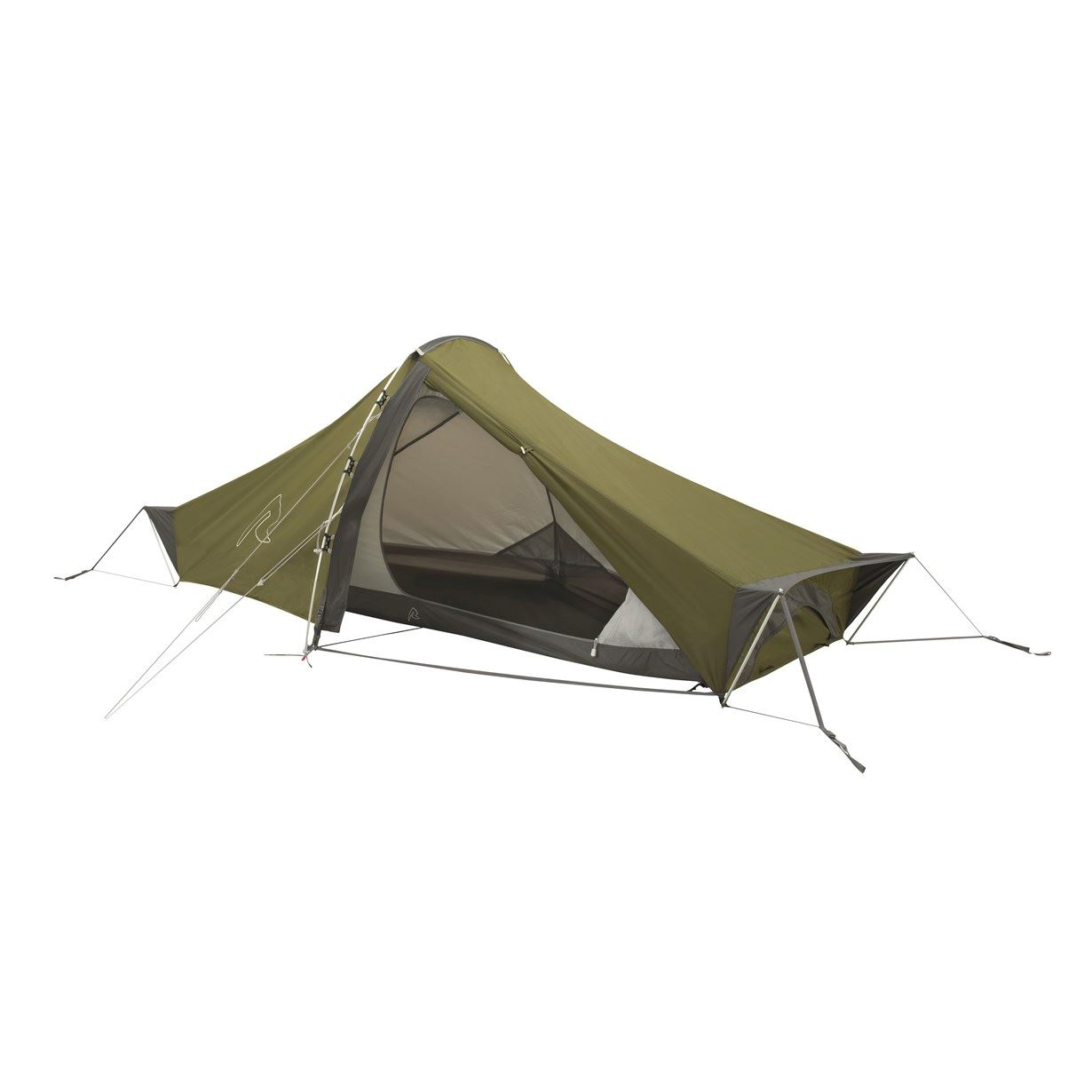
We highly recommend this near bombproof one-person shelter – the Robens Starlight 1 offers some very impressive features at an attractive price

Extremely spacious trekking pole tent that we found to be wonderfully compact and lightweight, perfect for backpackers and thru hikers
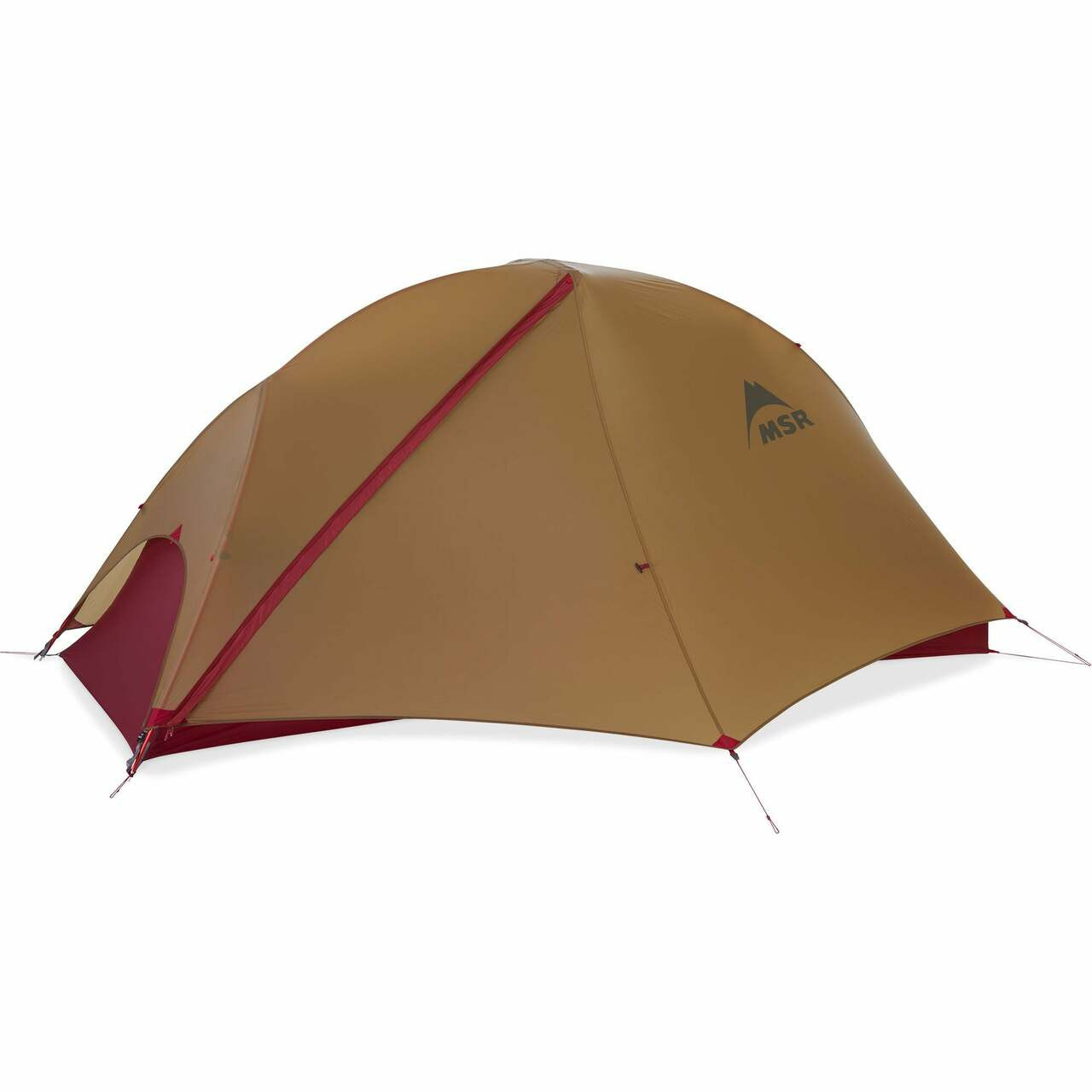
We knew this double-wall tent was impressively light, yet it's also surprisingly spacious – a top choice for weight-conscious backpackers
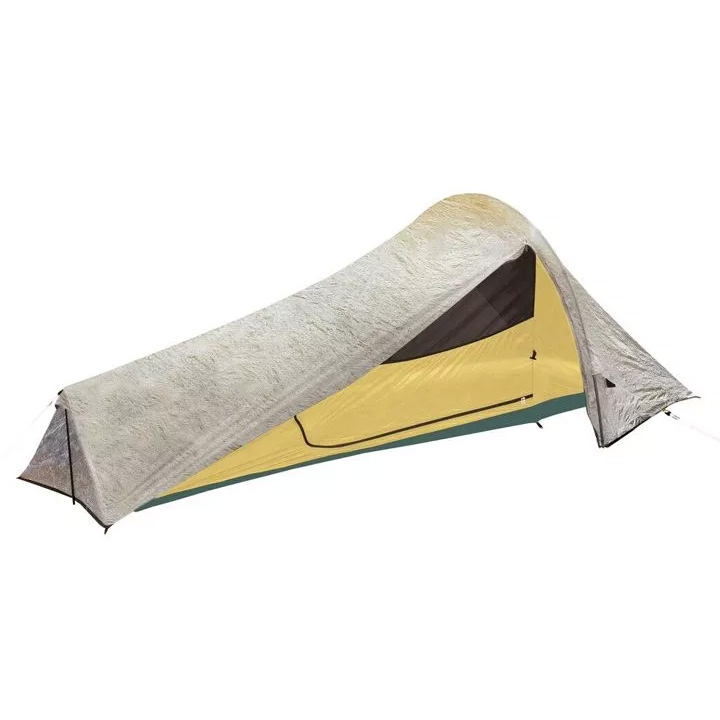
An extremely lightweight tent for when every gram matters, though the quality of the components mean that it's eye-wateringly expensive
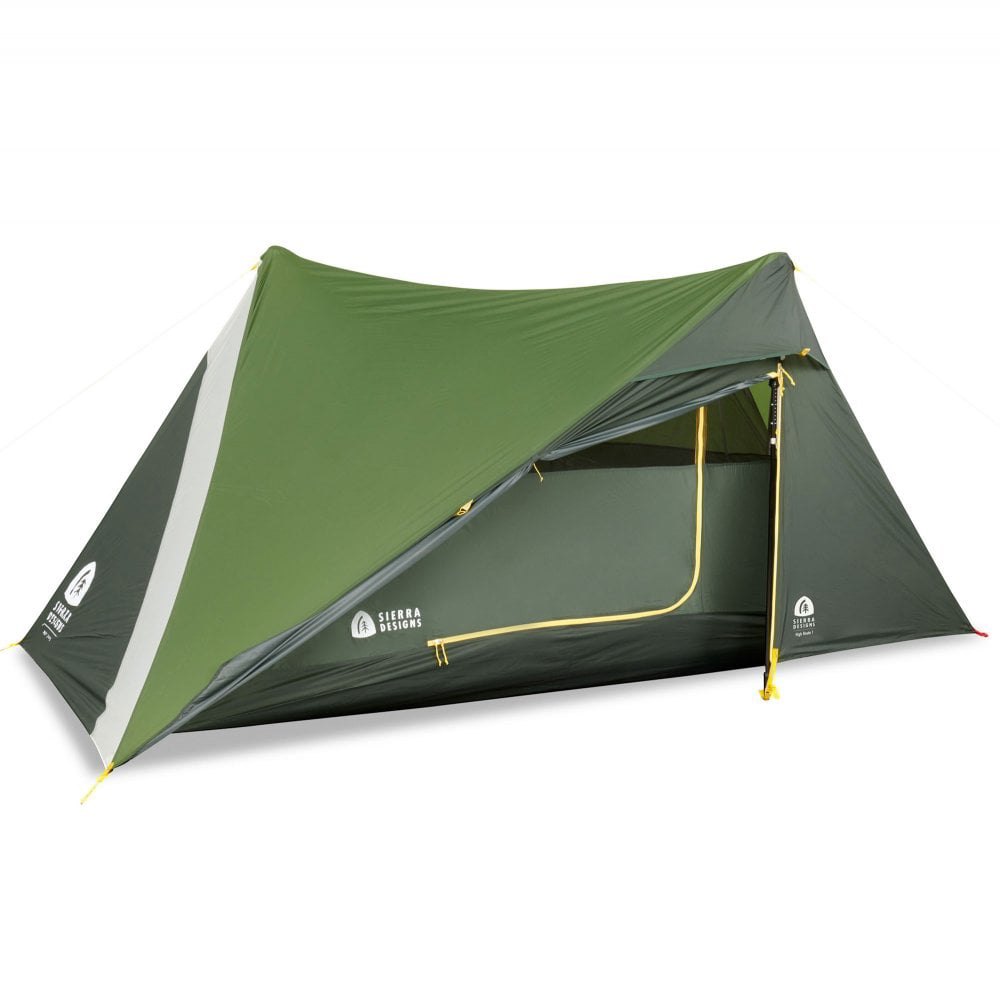
We found the High Route 3,000 to be an unusual trekking pole tent that balances weight, size and liveability, with useful porch areas and plenty of space
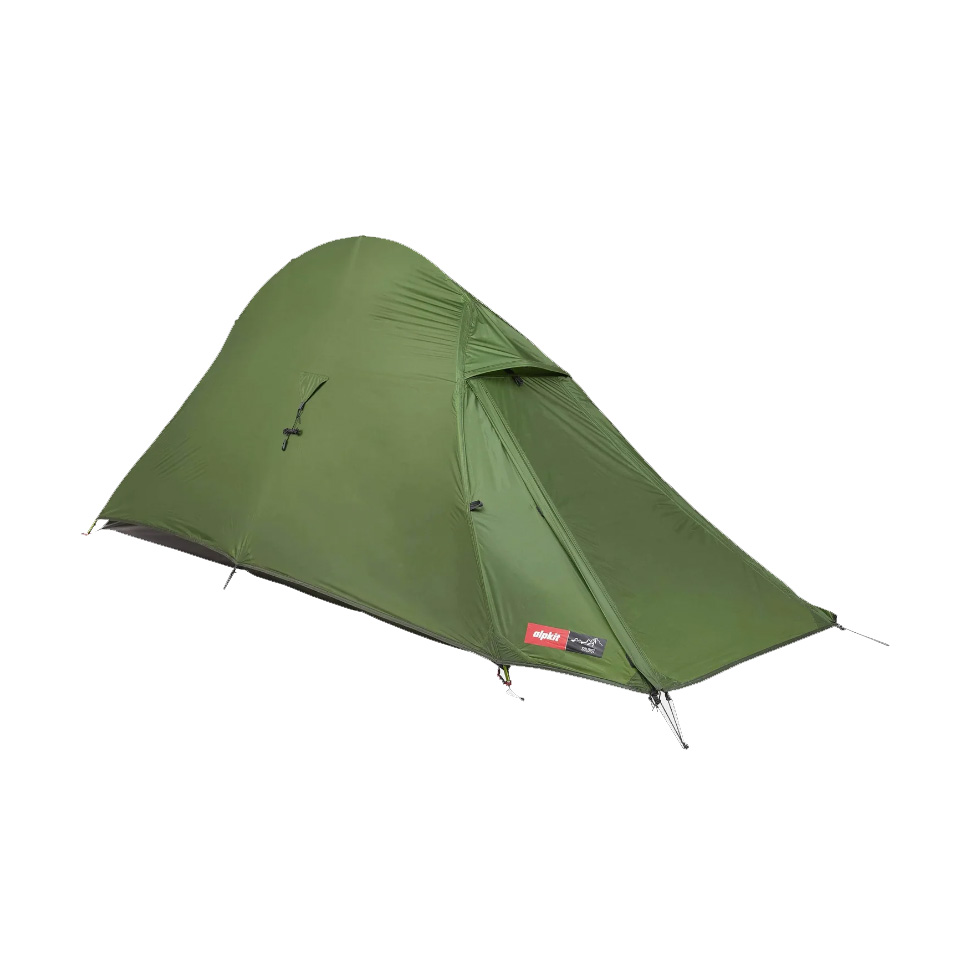
A compact, well-designed, lightweight 1-person tent – we think this is the perfect shelter for backpacking escapades throughout most of the year
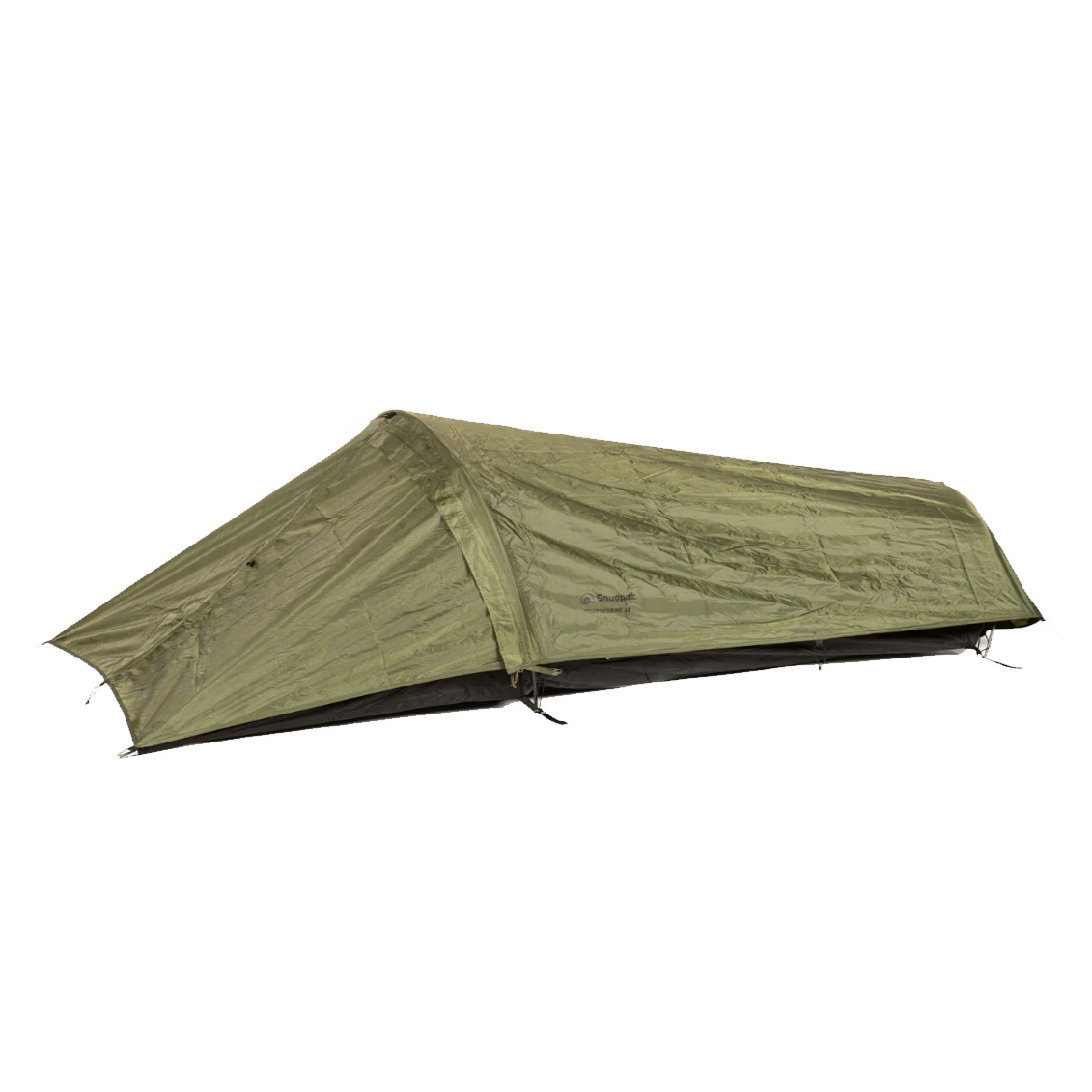
A well-priced low-profile solo tent that we found works well for stealthy wild camps and avoiding the worst of the wind
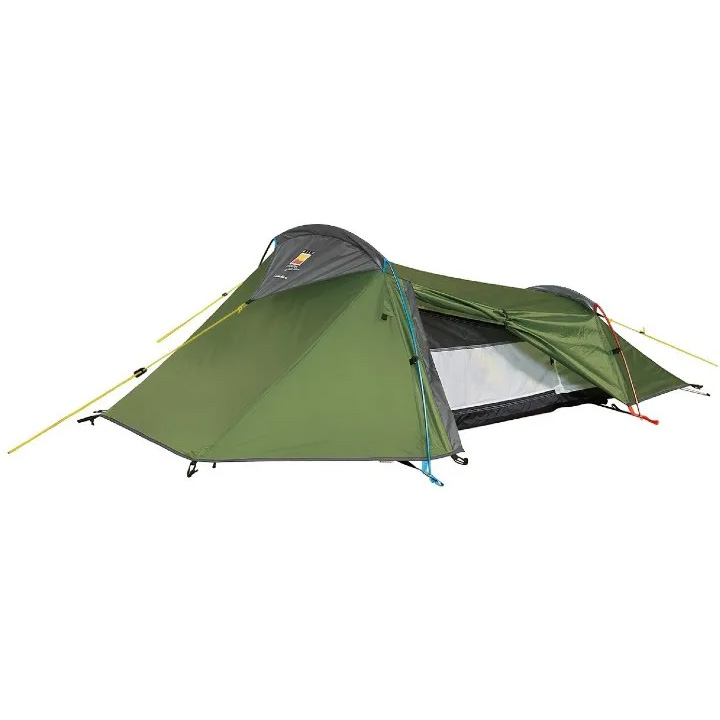
We approved of this great starter tent for an affordable first foray into solo camping – it's so quick and easy to pitch
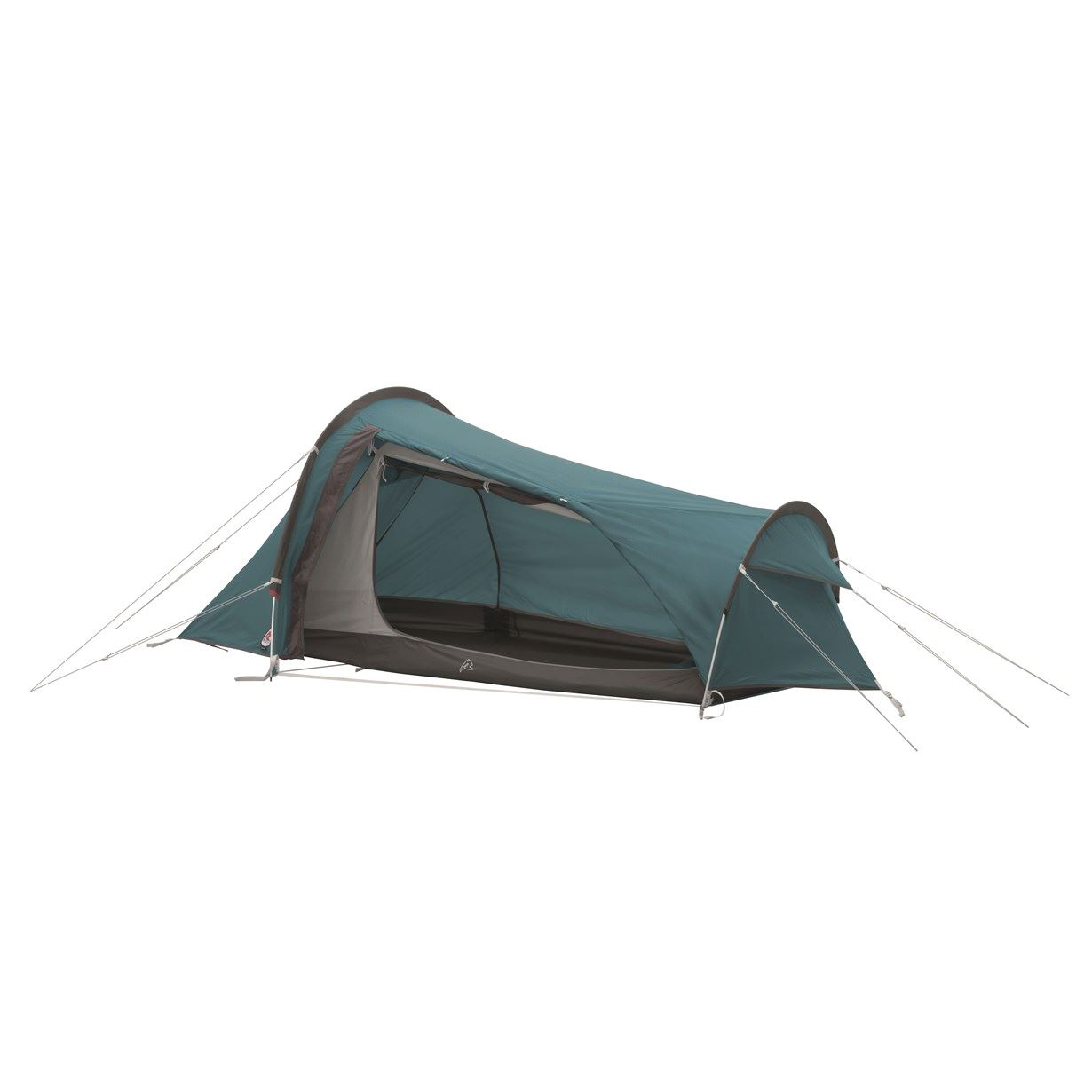
A great value entry-level tent that we found to be robust, stable and protective, if fractionally heavy for a solo shelter
The best one-person tents we recommend in 2025
You can trust Advnture
The best one-person tent overall
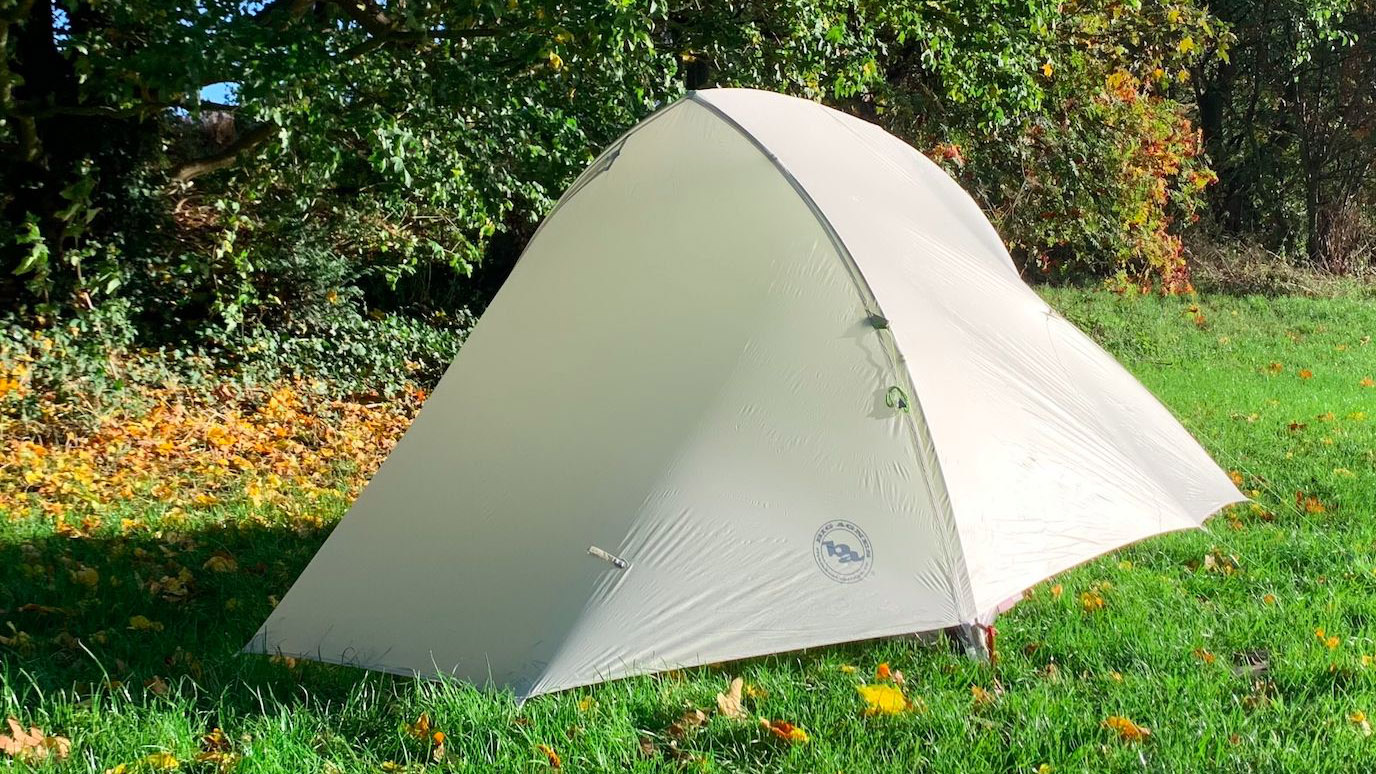
Specifications
Reasons to buy
Reasons to avoid
The Big Agnes Fly Creek HV UL2 feels so ultralight initially that you'd be forgiven for thinking it wouldn't last a season. However, don't judge a book by its cover – this tent is seriously durable and able to cope with its fair share of wear and tear. Our expert tester Craig said that "the Fly Creek UL can put up with a surprising amount of abuse on the trail, as long as you treat it with a reasonable amount of care."
For a one-person tent, there's a decent amount of space too. It's got one door and a fair-sized vestibule, providing more than enough space for a solo adventurer and their kit. The vestibule is large enough to accommodate muddy boots and a sopping wet backpack or two. Some backpacking tents aren't large enough to properly sit up in, which makes them claustrophobic affairs – not so that Fly Creek UL, which has ample sitting space and enough room to move around freely in. Craig also goes on to say that it's "a doddle to erect and disassemble."
Read our full Big Agnes Fly Creek HV UL2 review
The best value one-person winter tent
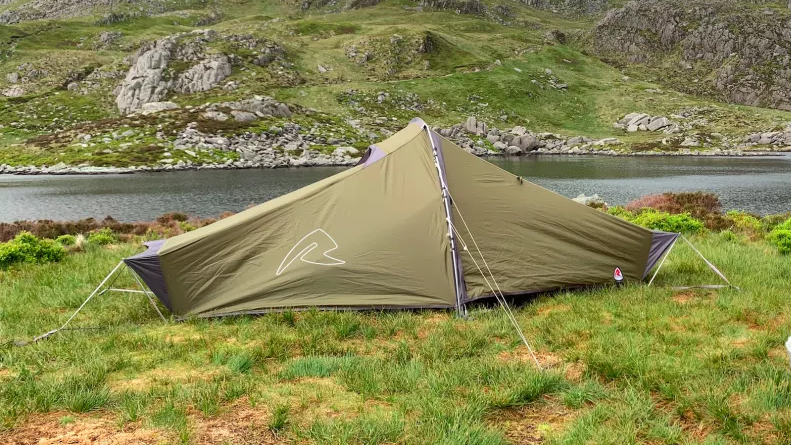
Specifications
Reasons to buy
Reasons to avoid
From Danish camping experts Robens, the Starlight 1 is an impressively sturdy solo tunnel tent that's designed to perform even in difficult conditions. It's reputed to be able to withstand winds of up to 160kmph (94mph), making it "definitely one of the best four-season tents available today" according to our expert tester Craig.
He goes on to say that he's "owned the Robens Starlight 1 for a number of years now, and it’s become my go-to tent of choice." It's weight and packability makes it reasonably portable, while it's durability is top-class. Pitching is relatively straightforward and the multiple ventilation options are good too. Our main gripe is the lack of space on the inside and the small vestibule.
If you're after a do-anything shelter that's small and performs in pretty much all conditions, the Robens Starlight 1 is a solid option with some thoughtful features.
Read our full Robens Starlight 1 review
The best one-person tent for stretching out

Specifications
Reasons to buy
Reasons to avoid
Our mountain camping expert Matthew insists that the Skyscape Trekker is "one of the most practical and effective options on the market." It weighs less than a kilo and its packed down size is so small it has to be seen to be believed. This all makes it a shoe-in for multi-day backpacking adventures.
It's a trekking pole tent with a hybrid designed that's based on a wedge-style single-skin pole shelter, though its hanging mesh and fabric inner provide some of the perks of a standard double-wall tent as well. It's easy to pitch and, once up, it's surprisingly roomy, benefitting from a spreader bar design that widens the headroom. It can also be pitched with carbon fiber struts, which are sold separately.
All in all, this is a tent that offers fantastic liveability for numerous nights in the backcountry. If you're someone who's looking to go ultralight, it could be the tent for you, though beginner campers may be served better elsewhere.
Read our full Six Moon Designs Skyscape Trekker 1P review
The best one-person tent for vestibule space
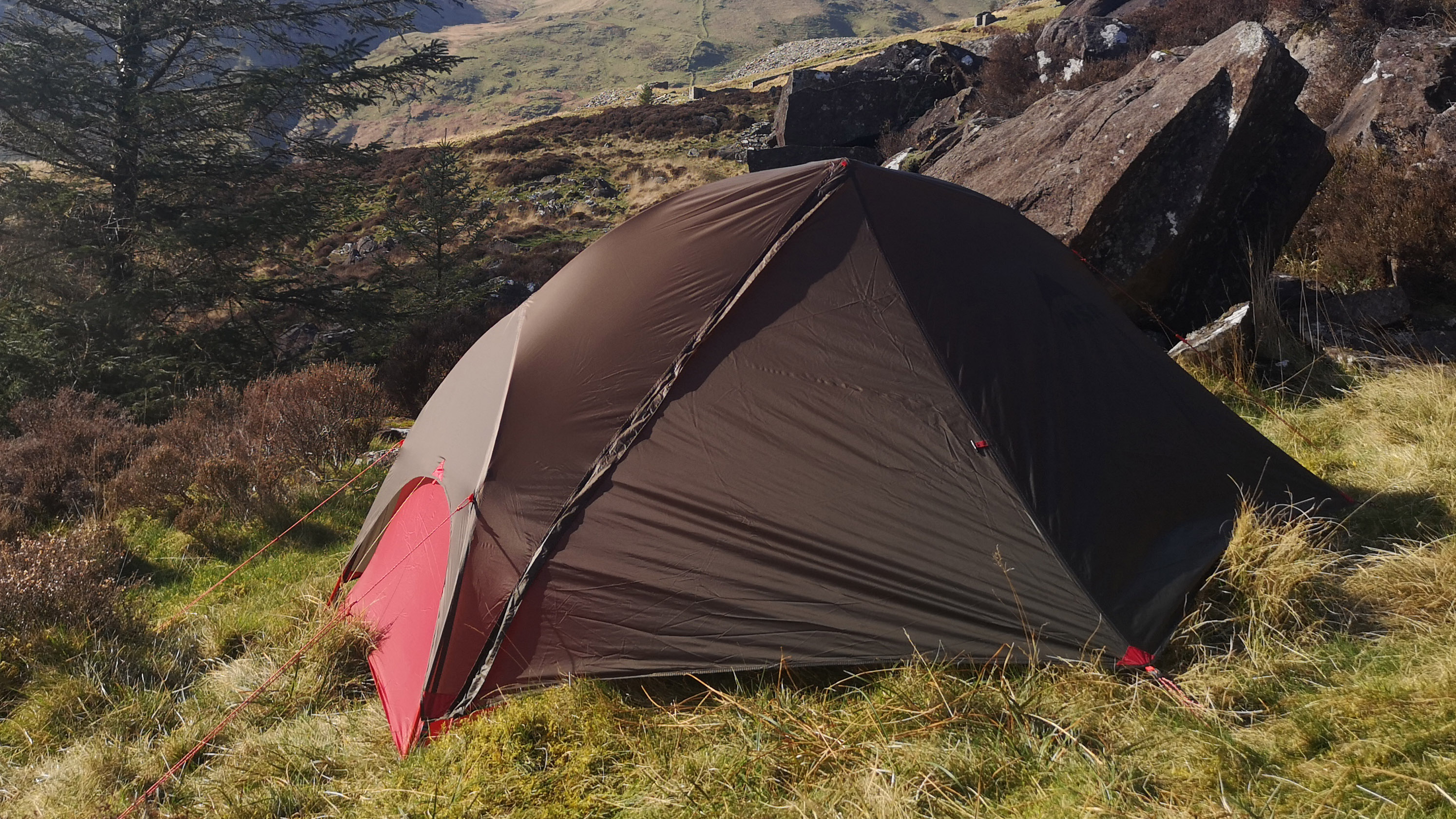
Specifications
Reasons to buy
Reasons to avoid
First impressions go a long way and our expert tester Matthew admitted that "it was hard not to be instantly impressed by the compact size and amazingly low weight of this tent when we first saw it packed away in its stuff sack." This is especially admirable considering the Freelite 1 is a double-skinned pole tent, rather than a more minimalist single-skin trekking pole tent. It's ideal for backcountry adventures where every gram matters.
With all of this in mind, we expected a relatively cramped interior but once we pitched it we found the opposite was true. The rectangular inner footprint provides decent length and width, while the headroom is superb. Importantly, the vestibule is also large enough to store muddy boots and wet gear.
As with most ultralight solo shelters, this is a tent designed for the milder months – we’d class it as a two-to-three season model. It’s also better suited to sheltered camp spots rather than exposed hillsides, since one side of the tent has a steep wall that can catch the wind. Matthew advises: "just be sensible about where you pitch it and you’ll be fine."
Read our full MSR FreeLite 1 review
The best ultralight one-person tent

5. Terra Nova Laser Pulse Ultra 1
Our expert review:
Specifications
Reasons to buy
Reasons to avoid
Terra Nova markets the Laser Pulse Ultra 1 as the ‘lightest tent in the world’. At only 450g minimum weight (490g when you pack it as intended) it’s perfect for people who know their bag weight to the nearest 0.1g. Or for people who like bragging about ultralight gear at parties.
The tent is aimed at the multiday mountain marathon runner - the type of person who wants to keep weight to the absolute minimum, but can suffer a little for the sake of a couple of nights on the hill. The shelter has a tunnel construction, which we found gave enough height to allow an adult to sit up inside. A groundsheet protector is available separately. And if you’re worried about wear and tear, Terra Nova offers a guarantee ‘to the original owner against defects in materials and workmanship for the lifetime of the product’.
The best trekking pole tent
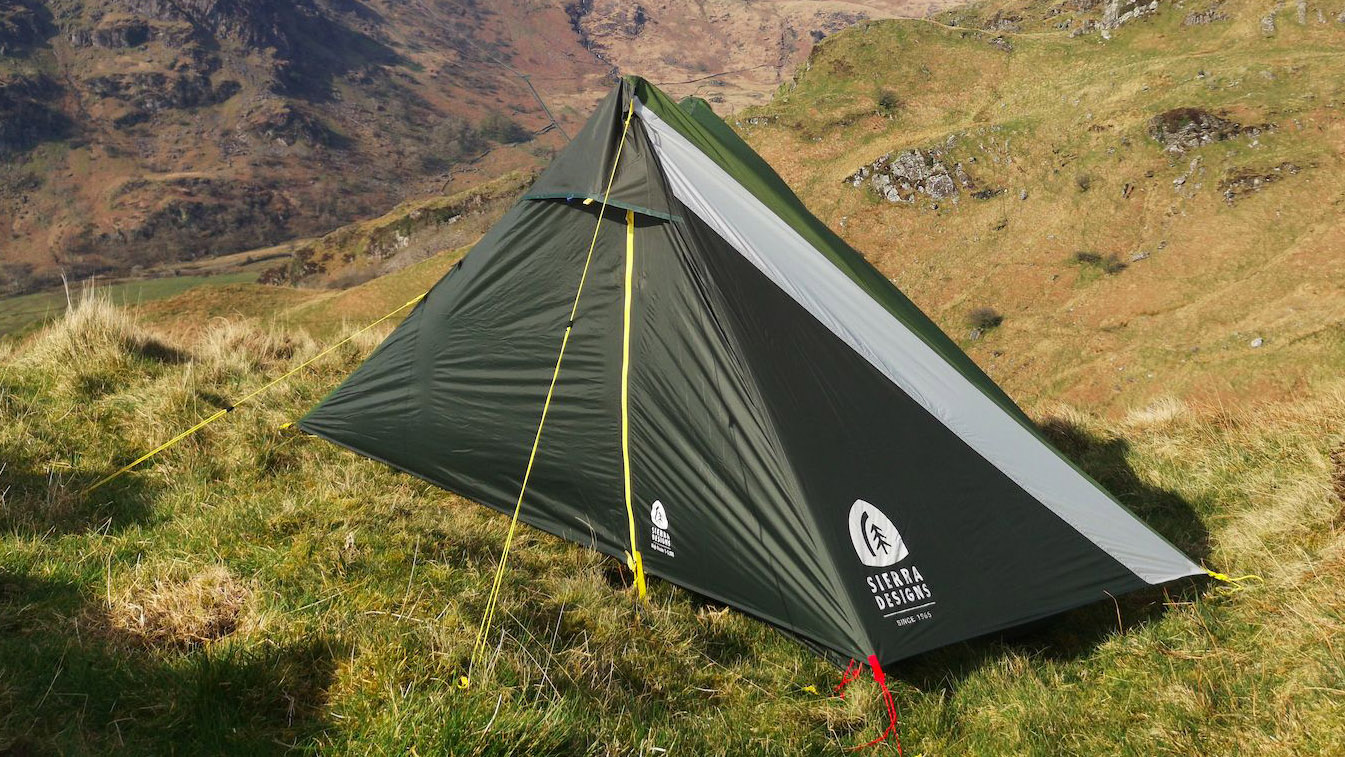
Specifications
Reasons to buy
Reasons to avoid
This innovative, double-walled shelter uses trekking poles placed at opposite corners to form its structure. It creates an offset, slightly odd look that, despite appearances, is very effective. "We grew to appreciate the ingenuity of the design," stated our expert tester Matthew. It provides more interior headroom than similar tents in this guide.
This 3000 version is the result of evolution from the original High Route. It's a more robust beast, with heavier and more rugged fabrics that boast a 3,000mm Hydrostatic Head, hence the 3000 in the name. This means greater protection from the rain and greater interior warmth.
There's also a huge degree of versatility, as it can be pitched outer first, all-in-one or just as the inner on dry days. While the inner isn't the widest around, there's still room to stretch or sit upright, a quality not present in all one-person tents. The design provides two vestibule spaces, one that's accessible via a half-zip that Sierra Designs has named the 'gear garage' and the other at the main entrance.
Read our full Sierra Designs High Route 3,000 1P review
The best value one-person tent for summer
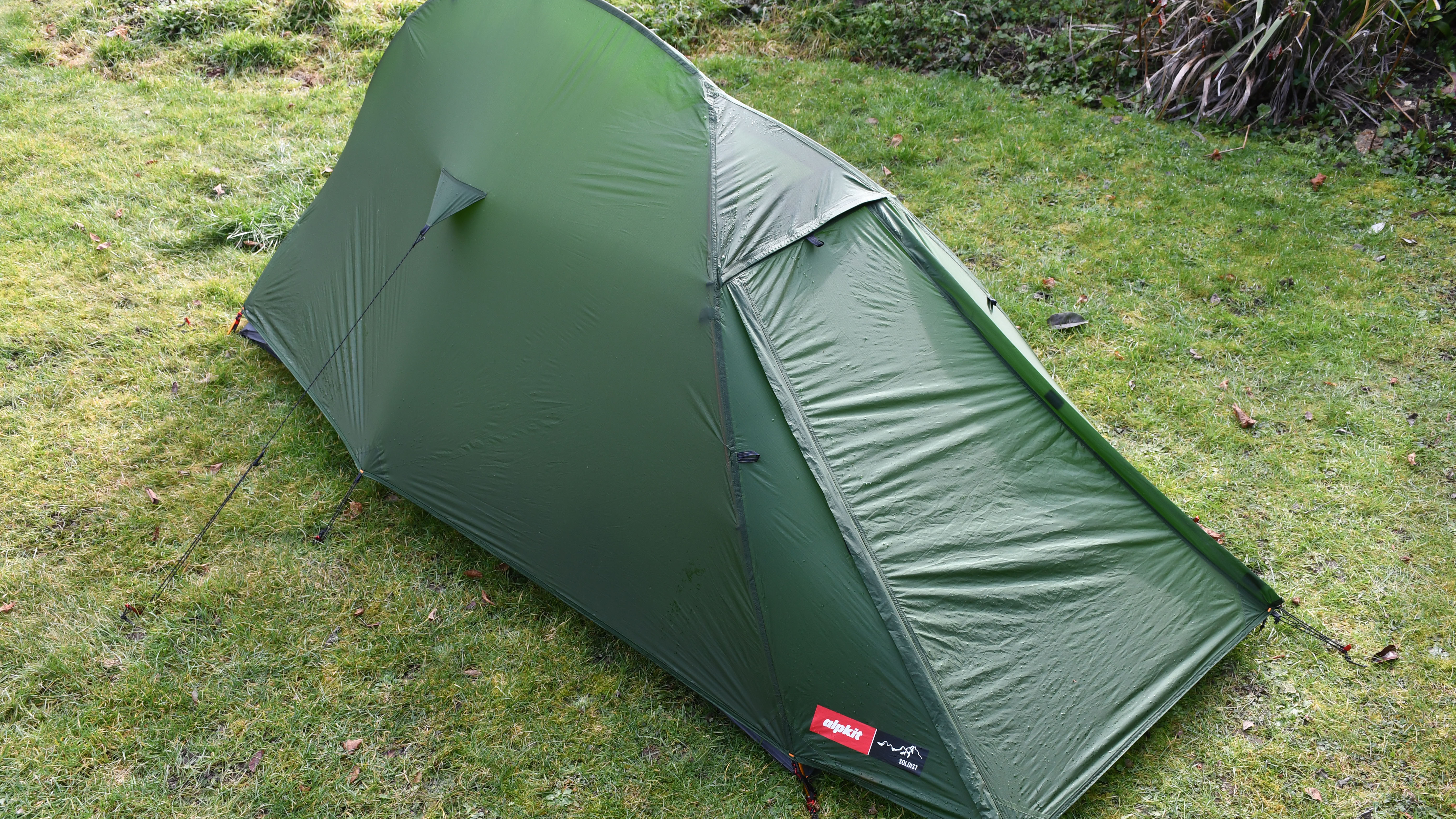
Specifications
Reasons to buy
Reasons to avoid
Available at an excellent price, the Soloist is the ideal tent for solo backpackers looking to venture out in all but the depths of bleakest midwinter.
It features a semi-geodesic design that's easy to erect and take down. One of the key components of the wild camping code we should all try to follow is discreet camping, which this tent's color allows when pitching in grassy terrain. There's plenty of space inside the Soloist for one person plus a reasonable amount of gear, thanks to the tapered shape. "No matter how much gear I’ve lugged along for the various trips I’ve taken this tent on, the Soloist has swallowed the lot," said our expert tester Pat.
At 95cm tall, the interior gives plenty of space to sit up and move around, while the 2-meter length is long enough for most to lie back, though taller campers may want to look at the extra large version. In terms of vestibule space, there's enough for wet gear and the like, though not quite enough to fire up the camping stove when it's pouring outside.
Read our full Alpkit Soloist one-person tent review
The best low-profile one-person tent
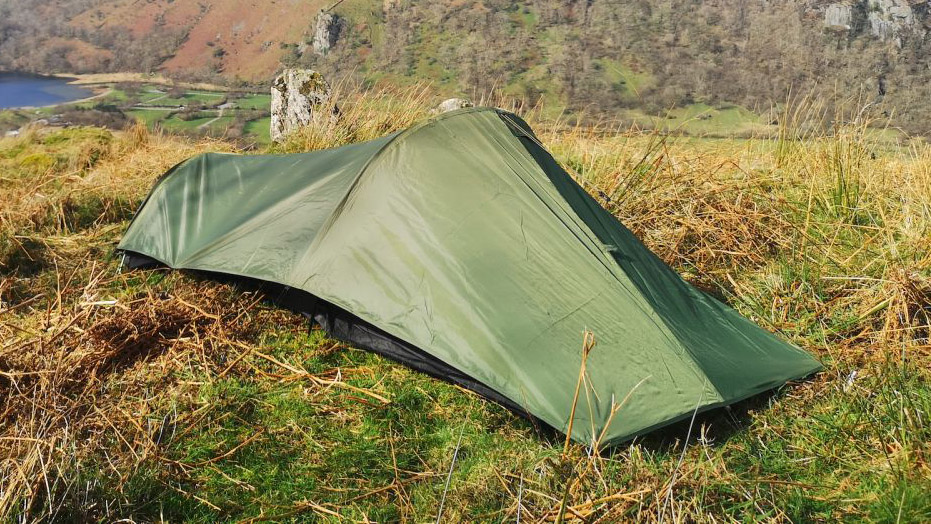
Specifications
Reasons to buy
Reasons to avoid
Campers who desire headroom and space to move around won't be enamored with the Ionosphere, but those who value the inconspicuous nature of a wind-shedding low profile will approve. The design of this tent, from British brand Snugpak, is halfway between a hooped bivy and a standard one-person tent, making it one of the most minimal offerings in this guide. So, it's a little bit cramped in terms of height, though its length and width are both exceedingly generous.
"This makes it a practical choice for stealthy wild camps just off the trail or exposed pitches on hill, moor and mountain," according to our expert tester Matthew. Featuring inner-first pitching, it's easy to set up, while the double-walled design provides plenty of protection. The inner can also be pitched individually, providing a stand-alone bug shelter in warmer weather.
It's width means that there's room for your kit and rucksack next to your sleeping area, though there's no vestibule, which means storing your wet gear inside. Two mesh pockets provide useful quick-access storage too.
Read our full Snugpak Ionosphere review
The best one-person tent for ease of pitch
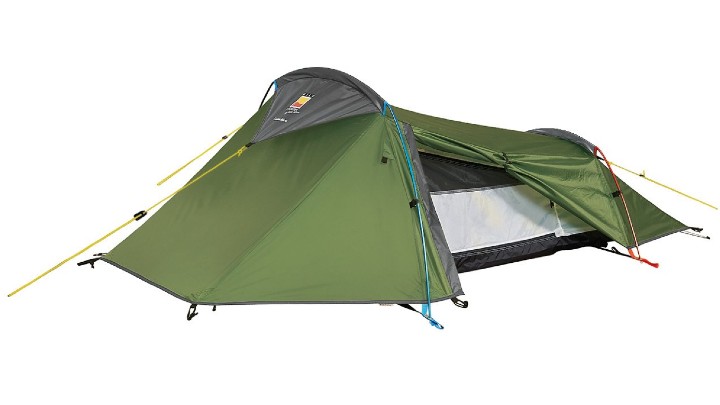
9. Wild Country Coshee Micro V2
Our expert review:
Specifications
Reasons to buy
Reasons to avoid
Designed and priced to be more accessible to mainstream campers and backpackers, the Wild Country Coshee Micro V2 is an affordable option for people just starting to explore one-person tents. This would be a great place to start if you’re not sure exactly what you want in terms of features.
It is a small tunnel-type tent, with only two poles. We were unable to sit up inside it, which wasn't a surprise considering it's described as a ‘deluxe bivvy’ by the manufacturer. Porch space is limited, but the full-length door enables you to make the most of what there is. If you’re happy to slide into a small abode at the end of a long day, this is well worth a look.
The best entry level one-person tent
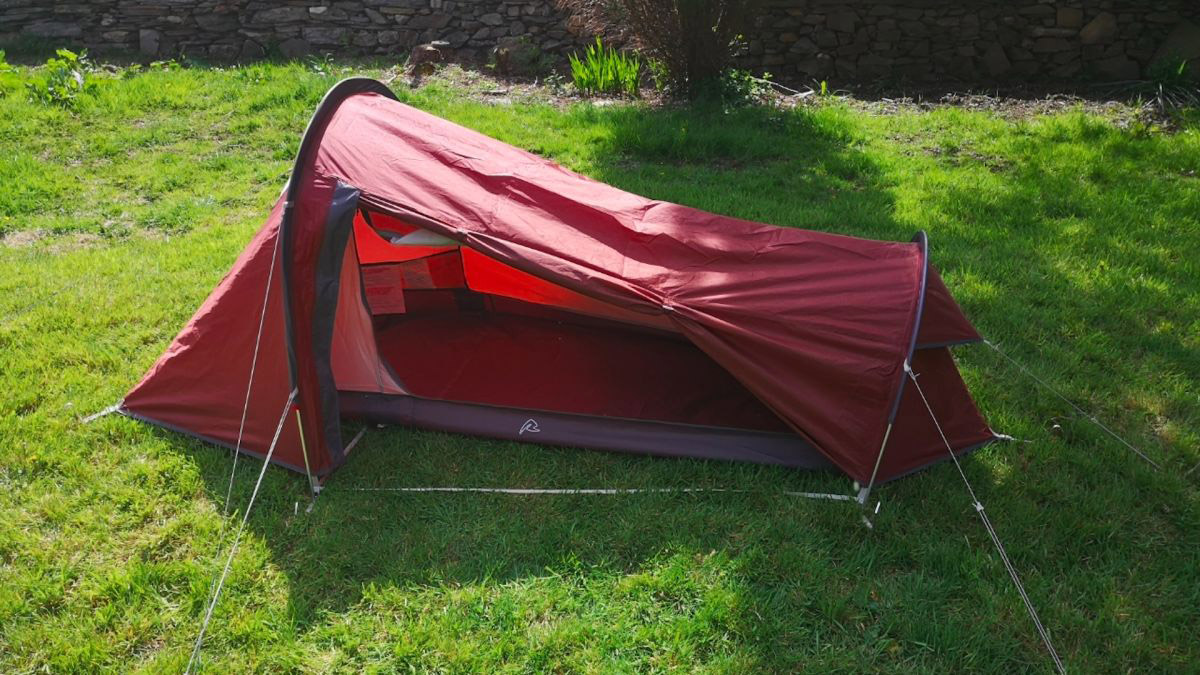
Specifications
Reasons to buy
Reasons to avoid
"Extremely well-priced," says our expert reviewer Matthew. Yes, this robust and stable shelter is perfect for backpackers on a budget. Yet, despite the low price, we found that the Arrow Head is well designed and, with its rugged 75-denier poyester fly sheet and quality aluminium pole set, makes for a durable little product.
There's versatility too, as it can be pitched outer first, as an all-in-one or just as an inner tent for warm, dry days. As is often the case with the more budget options, it's a little heavier than some of the premium tents in our roundup, though the packed size is pretty good. The bottom line is, if you want to save grams, you’ll have to spend a bit more. Fortunately, this tent still stows easily in a backpacking rucksack.
Read our full Robens Arrow Head review
The best one-person tent comparison table
One-person tent | Price | Weight | Style |
Big Agnes Fly Creek HV UL2 | $399 (US) / £374.99 (UK) | 1kg / 2lb 4oz | Ultralight backpacking tent |
Robens Starlight 1 | $180 (US) / £256 (UK) | 2kg / 4.4lb | 4-season backpacking tent |
Six Moon Designs Skyscape Trekker 1P | $270 (US) / £285 (UK) | 790g / 1lb 12oz | Ultralight backpacking tent |
MSR FreeLite 1 | $370 (US) / £395 (UK) | 880g / 1lb 15oz | Ultralight backpacking tent |
Terra Nova Laser Pulse Ultra 1 | £999 (UK) | 490g / 1lb | Ultralight backpacking tent |
Sierra Designs High Route 3,000 1P | £300 (UK) | 1.1kg / 2.4lb | Trekking pole backpacking tent |
Vaude Hogan SUL 1-2P | £470 (UK) | 1.25kg / 2.8lb | Backpacking tent |
Alpkit Soloist | £139.99 (UK) | 1.2kg / 2.10lb | Backpacking tent |
Snugpak Ionosphere | £194 (UK) | 1.6kg / 3.5lb | Backpacking tent |
Wild Country Coshee Micro V2 | £130 (UK) | 1.4kg / 3lb | Backpacking tent |
Robens Arrow Head | £141 (UK) / €161 (EU) | 1.8kg / 4lb | Backpacking tent |
Meet the testers
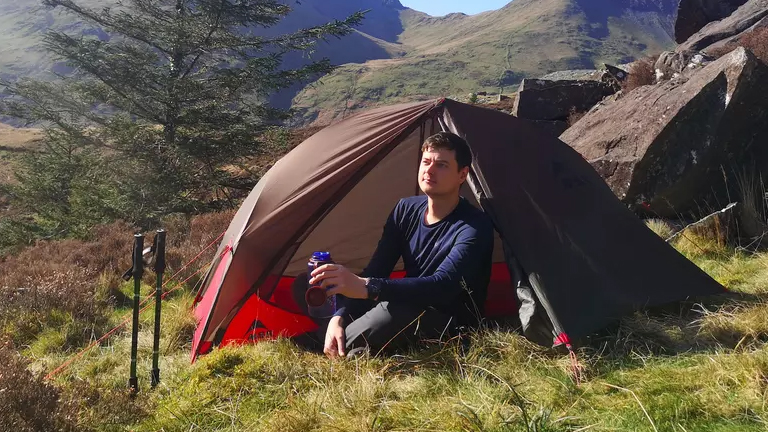
Matt has been camping for as long as he can remember. He has a particular fondness for wild camping trips, especially in Wales' spectacular Eryri (Snowdonia) National Park, where he lives. He's tested many solo shelters in his time and loves disappearing into the mountains with nothing but his camping gear for a lightweight, overnight adventure.

Pat's outdoor adventures have taken him across the world and, wherever he goes, he's usually got a tent in his backpack. These days, when he's not solo camping in the hills, he enjoys camping trips with his family. An experienced gear tester, he leaves no stone unturned and no peg unexamined when it comes to judging outdoor kit.
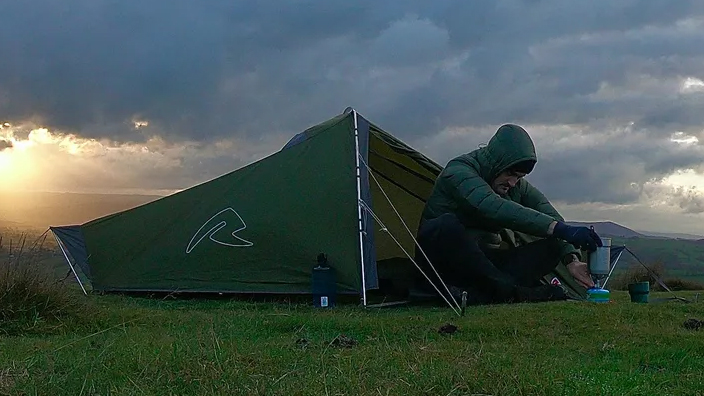
Growing up just south of the glorious Brecon Beacons National Park, Craig spent his childhood living in the hills. As he got older, the hills got bigger, and his passion for spending quality time in the great outdoors only grew - falling in love with wild camping. Having recently returned to the UK after almost a decade in Germany, he now focuses on regular camping adventures in nearby Snowdonia and the Brecon Beacons.
How we test the best one-person tents
At Advnture we endeavor to test every product we feature extensively in the field. That means one of our team of reviewers and writers – all experienced outdoor specialists active across the US, UK, Europe and Australasia – taking it out into the terrain and climatic conditions that it’s designed for. If, for any reason, this isn’t possible, we’ll say so in our buying guides and reviews.
Our reviewers test one-person tents overnight, sleeping solo in outdoor conditions, temperatures and terrain appropriate to the rating assigned to the product by the manufacturers/ brand. They will also carry the tent in a backpacking scenario to test its performance as a shelter for multi day hikes.
For more details see how Advnture tests products.
How to choose the best one-person tent
There are hundreds of one-person tents available from an assortment of brands, all with very different designs, and it’s easy to get overwhelmed.
Our camping expert Matthew advises that "if you're tackling mountains in winter, you'll want a tent that is 4-season rated and can withstand blizzards and everything else the alpine can (and will) throw at it." However, you might be wanting to get a taste for peak-bagging, taking on multiple summits under the summer sun. In which case, you'll need something lightweight, as you won't be quite as worried about your tent's ability to repel the apocalypse.
We've compiled a FAQs and other aspects to consider before buying the best one-person tent for your adventures:
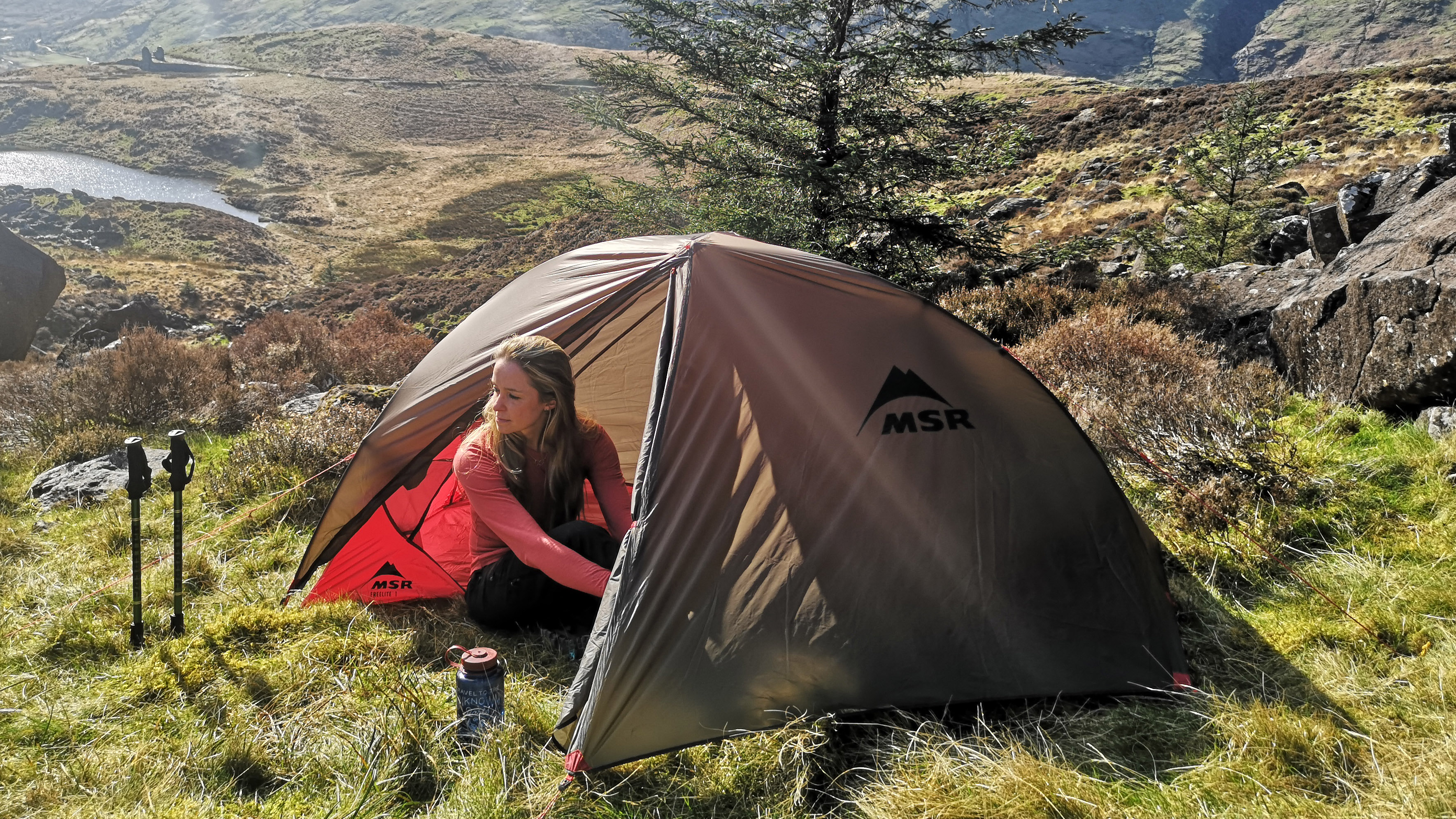
How long should a one-person tent last?
This comes in two parts. Firstly, how long will this tent last? Are you having a one-night stand, or will you be taking this tent camping for the next 20 years? Look for tents made of strong materials and with a high denier. Tied into this is how well your one-person tent will weather the elements. You want to make sure the tent is up to the conditions wherever you’ll be camping. No one wants to wake up in the middle of the night with their tent flattened by a storm. Strong poles are a must.
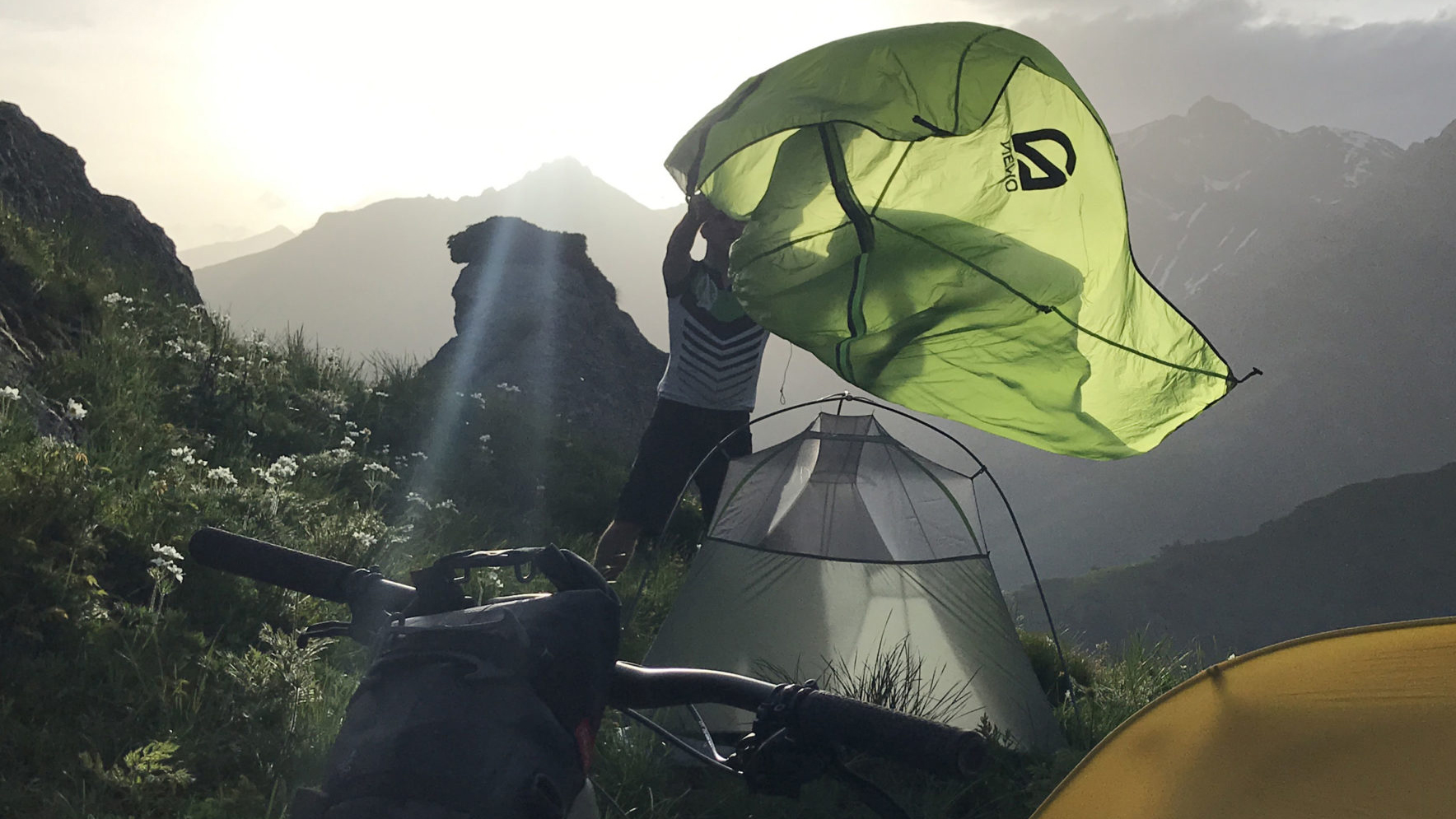
What is a 3-season tent?
Just like sleeping bags, the best one-person tents have a season rating. It works very much the same way and will help you match up the right tent to the right weather conditions. A one- to two- season tent will have been designed for mild, warm and relatively dry conditions. It’ll be geared more towards keeping you cool and might leak in rain. A three-season tent will be ideal in conditions that include rainy and stormy weather. These tents are a bit more robust. Finally, a four-season tent is built for full-on winter camping and the conditions that come with it, designed to keep you warm in the snow and ice.
If you're venturing out in winter, our how to choose a sleeping bag guide will also be of interest.
How big should a one person tent be?
One-person tents tend to be minimalist. If you’re on the tall side, you want to make sure it’s long enough for you to lie down in. You don’t want to find out, at 11 o’clock on a stormy night, that your head is sticking out in the rain. It’s also worth giving the other dimensions a thought too: is it high enough to sit up in, or more of a glorified bivvy? Is there enough space for you and your kit, or is a bit of a squeeze? These questions are more relevant for multi-day expeditions, when you really appreciate that extra space.
If you want to go uber-minimalist, you might consider a bivvy. Our one-person tent vs bivvy bag feature delves into the pros and cons of either option.
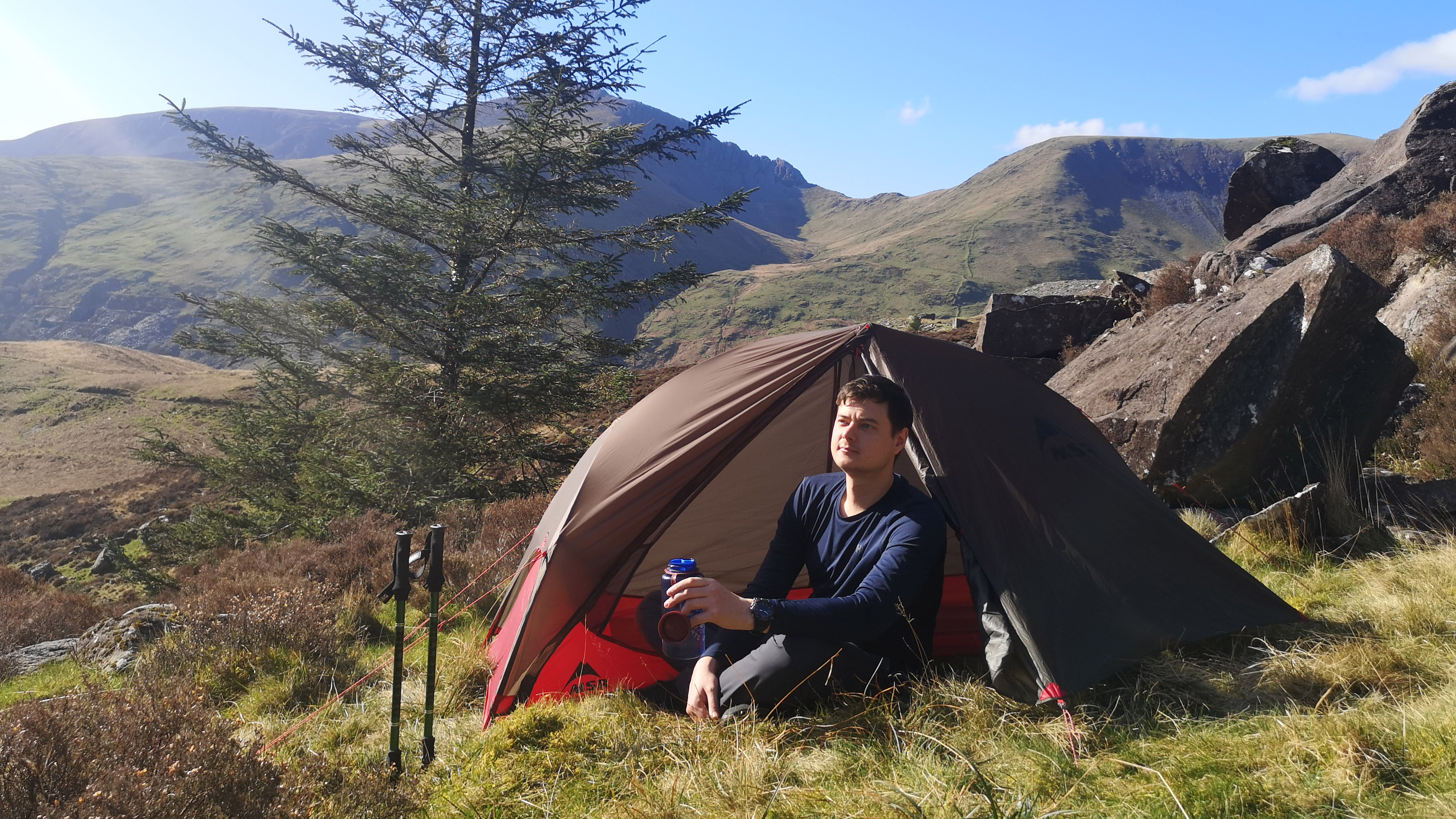
How heavy is too heavy for a one-person tent?
When lugging all your camping gear up a hill, the lighter it is, the better. However, too light and it may not afford the protection you need against the mountain elements.
In this guide, the ultralight 3-season tents range from around 500g to 1kg. These tents are generally constructed from cutting edge materials and are more expensive. They're also generally unsuited to winter use.
Between 1kg and 1.5kg is fairly normal for a standard one-person tent and won't weigh you down too much on the trail. A decent one-person winter tent will weigh more towards 2kg and will give you all the protection you need against gnarly conditions.
Above 2kg and you'll start to feel it on those long ascents. It might be worth spending more on something lighter.
Is packability important?
Ultralight backpackers will typically want the best one-person tent that is as small and light as possible – within reason. As well as the weight, the packed size is also important. You can pack the world’s lightest tent, but if it takes up your entire backpack that’s not much good.
What construction features should I consider?
Each tent will have different construction features. Decide which ones are important to you and see how many you can get! For example, is it freestanding? If so, this is very useful on rocky ground that won’t take pegs, but not so necessary if you’re camping on grass. Can it be pitched inner and outer together for a hasty camp in the rain? Or can the outer be easily removed for hot summer nights? Consider too, little features like porch size, washing lines and pockets. It's infuriating if you've got the best camping tech but it has to stay buried in your backpack because there's nowhere in the tent's interior to keep it for quick, convenient access.
Advnture Newsletter
All the latest inspiration, tips and guides to help you plan your next Advnture!
An outdoors writer and editor, Matt Jones has been testing kit in the field for nearly a decade. Having worked for both the Ramblers and the Scouts, he knows one or two things about walking and camping, and loves all things adventure, particularly long-distance backpacking, wild camping and climbing mountains – especially in Wales. He’s based in Snowdonia and last year thru-hiked the Cambrian Way, which runs for 298 miles from Cardiff to Conwy, with a total ascent of 73,700 feet – that’s nearly 2½ times the height of Everest. Follow Matt on Instagram and Twitter.
- Chris Ord
- Craig Taylor
- Pat KinsellaAdvnture Consulting Editor
- Alex Foxfield
